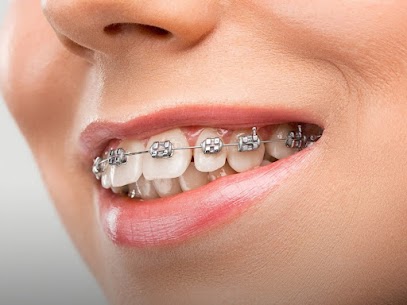Dental implants have become a popular solution for replacing missing teeth, offering a permanent alternative to dentures and bridges. However, despite their increasing popularity, there are many aspects of dental implants that patients often overlook. In this article, we will delve into what dental tooth implant are, their pros and cons, and provide insights into related options like teeth aligners and clear aligners. Understanding these factors will help you make an informed decision about your dental health.
Understanding Dental Implants
What Are Dental Implants?
Dental implants are artificial tooth roots made of biocompatible materials, typically titanium, which are surgically placed into the jawbone. They provide a stable foundation for fixed or removable replacement teeth (crowns) designed to blend seamlessly with your natural teeth.
The Procedure
The dental implant procedure generally involves several stages:
- Consultation and Planning: A thorough dental examination, including X-rays or 3D imaging, is performed to assess the condition of your jawbone and determine the best placement for the implants.
- Implant Placement: The dentist surgically places the implant into the jawbone, where it will fuse with the bone over time in a process called osseointegration.
- Abutment Placement: After the implant has healed and integrated with the bone, an abutment (a connector piece) is placed on the implant to hold the crown.
- Crown Placement: Finally, a custom-made crown is attached to the abutment, completing the restoration.
Pros of Dental Implants
1. Permanent Solution
One of the most significant advantages of dental implants is that they are designed to be a permanent solution for missing teeth. Unlike dentures, which may need to be replaced or adjusted over time, dental implants can last a lifetime with proper care.
2. Natural Appearance
Dental implants are designed to look and function like natural teeth. They can be customized to match the color and shape of your existing teeth, providing a seamless aesthetic that enhances your smile.
3. Improved Functionality
Dental implants allow for normal chewing and speaking, unlike some other tooth replacement options. With implants, patients can enjoy their favorite foods without worrying about their teeth shifting or coming loose.
4. Bone Preservation
When a tooth is lost, the jawbone can begin to deteriorate over time. Dental implants stimulate the jawbone, preventing bone loss and maintaining facial structure. This aspect is crucial for long-term oral health.
5. Easy Maintenance
Caring for dental implants is similar to caring for natural teeth. Regular brushing, flossing, and routine dental check-ups can keep your implants in excellent condition, making them easy to maintain.
Cons of Dental Implants
1. Surgical Procedure
Getting dental implants requires surgery, which may not be suitable for everyone. Some patients may experience anxiety about the surgical aspect, while others may not qualify due to health issues or insufficient bone density.
2. Time-Consuming
The entire dental implant process can take several months to complete. This timeline includes healing after implant placement and additional appointments for abutment and crown placement. Patients seeking a quicker solution may find this duration inconvenient.
3. Cost
Dental implants can be more expensive than other tooth replacement options, such as dentures or bridges. While they offer a long-term solution, the initial investment may deter some patients. Insurance coverage for implants may also vary, making them a financial consideration.
4. Potential Complications
As with any surgical procedure, there are risks involved. Potential complications may include infection, nerve damage, or implant failure. It’s essential to discuss these risks with your dentist during the consultation phase.
5. Bone Grafting Requirements
In cases where the jawbone has significantly deteriorated, a bone graft may be necessary to provide sufficient support for the implant. This additional procedure can prolong the overall timeline and increase costs.
What They Don’t Tell You: Hidden Aspects of Dental Implants
While the pros and cons outlined above are essential, there are additional factors that patients often overlook:
1. Not a One-Size-Fits-All Solution
Dental implants are not suitable for everyone. Factors such as age, health conditions, and lifestyle choices can impact the success of the procedure. A thorough evaluation by a qualified dental professional is necessary to determine if implants are the right option for you.
2. Lifelong Commitment
While implants can last a lifetime, they do require a lifelong commitment to oral hygiene. Neglecting proper care can lead to complications such as peri-implantitis, an inflammatory condition affecting the gum and bone around the implant.
3. The Importance of Follow-Up Care
After receiving dental implants, patients must attend regular follow-up appointments for monitoring. These check-ups are vital for ensuring the implants remain healthy and function correctly.
4. Impact on Surrounding Teeth
The placement of dental implants may affect adjacent teeth. If not adequately spaced, neighboring teeth may shift over time, potentially leading to alignment issues. Discussing your dental history and alignment with your dentist is essential to prevent this.
5. Emotional Adjustment
Adjusting to dental implants can take time. Some patients may initially feel discomfort or pressure, and there can be an emotional adjustment period as well. Patients should be prepared for these changes and maintain open communication with their dental care provider.
Alternatives to Dental Implants
If dental implants aren’t the right fit for you, there are several alternatives to consider:
1. Dentures
Dentures are removable prosthetic devices that replace missing teeth. They can be full or partial, depending on the number of teeth needing replacement. While dentures are more affordable, they may require adjustments and may not provide the same level of stability as implants.
2. Dental Bridges
Dental bridges use adjacent teeth as anchors to support a false tooth (pontic) in the gap left by a missing tooth. They are less invasive than implants and can be a good option for patients who don’t want surgery.
3. Teeth Aligners
For those with misaligned teeth, clear aligners (like Invisalign) are a popular alternative. These custom-made, removable trays gradually shift teeth into their proper position. While they primarily focus on alignment rather than tooth replacement, they can enhance overall dental aesthetics.
4. Clear Aligners
Clear aligners are a specific type of teeth aligner that offers a discreet way to straighten teeth. Made from transparent plastic, they are removable and often more comfortable than traditional braces. While they don’t replace missing teeth, they can improve the overall appearance of your smile.
Conclusion
Dental implants can be a life-changing solution for those with missing teeth, offering numerous benefits such as permanence, natural appearance, and improved functionality. However, it’s crucial to consider the potential downsides, including surgical requirements, cost, and the need for ongoing care.
What you don’t often hear about dental implants are the emotional adjustments, long-term commitments, and follow-up care necessary for success. It’s essential to discuss these factors with your dental professional to make an informed decision.
If dental implants aren’t suitable for you, alternatives like dentures, dental bridges, and clear aligners offer additional options for restoring your smile. Whatever path you choose, maintaining good oral hygiene and regular dental visits will contribute to your overall dental health. Take the time to explore your options and consult with your dentist to find the best solution for your unique needs!



